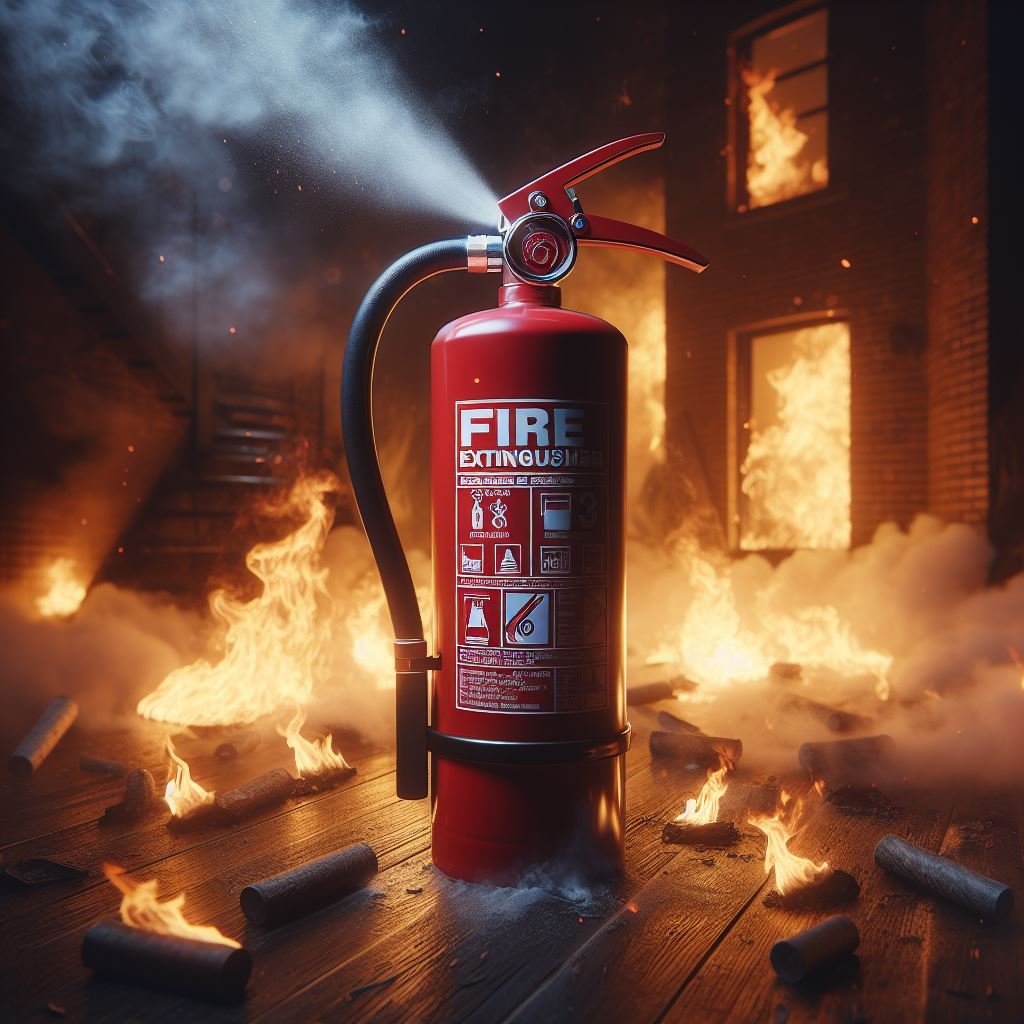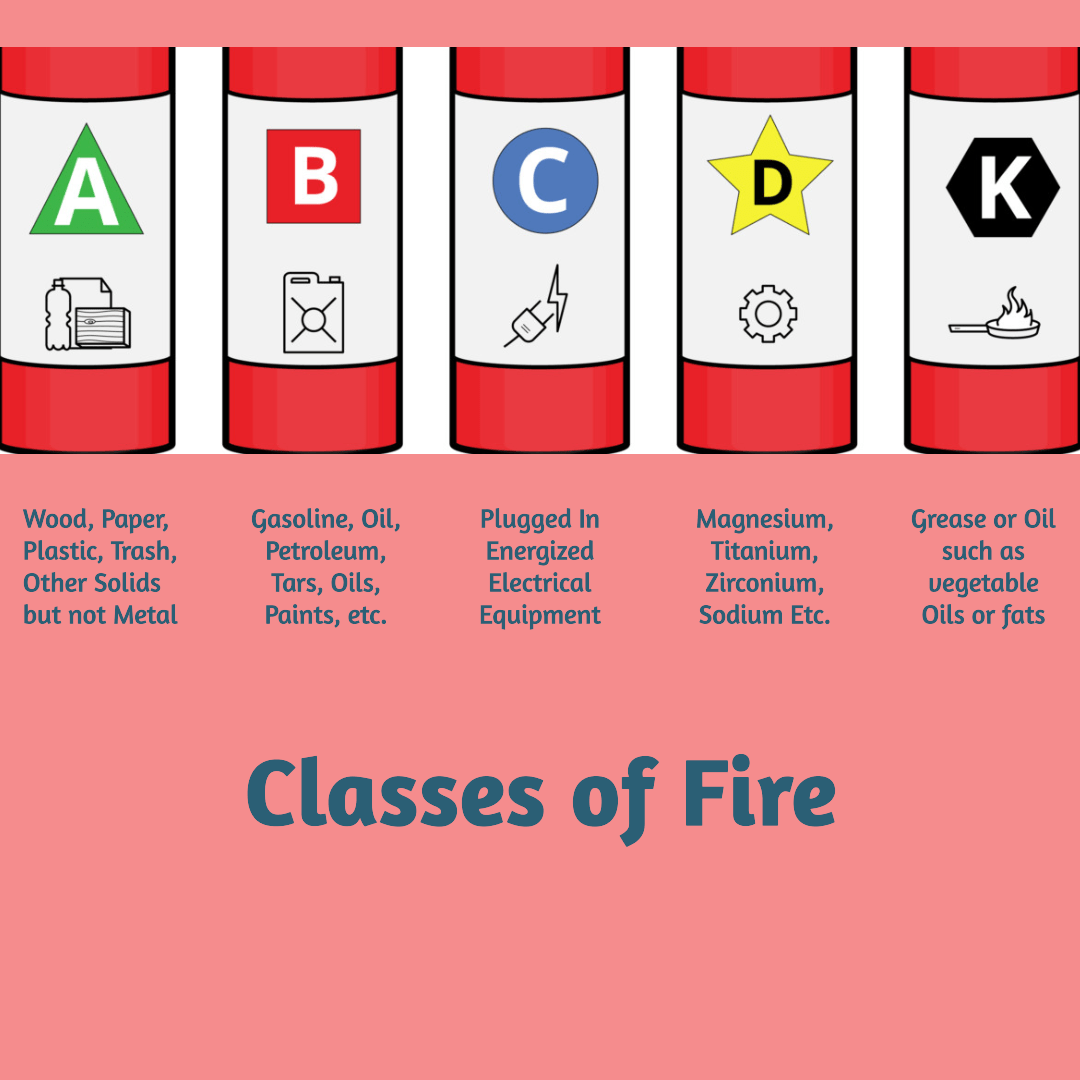How to Choose a Perfect Fire Extinguisher for Yourself
[ez-toc]
Fire emergencies can strike at any moment, making it imperative to have the right tools at your disposal to combat them effectively. One such tool is the fire extinguisher, a crucial piece of safety equipment found in homes, businesses, and public spaces. In this guide, we’ll explore the essential factors to consider when choosing the perfect fire extinguisher to protect yourself and your property.

1. Introduction to Fire Extinguishers
1.0.1 Importance of having a fire extinguisher:
Having a fire extinguisher within reach can mean the difference between a small incident and a devastating blaze. These devices are designed to swiftly extinguish fires, preventing them from spreading and causing extensive damage or injury.
1.0.2Different types of fire extinguishers:
Fire extinguishers come in various types, each tailored to combat specific classes of fires. Understanding these types and their applications is crucial in selecting the right extinguisher for your needs.
2. Understanding Fire Classes
2.0.1 Explanation of fire classes:
Fires are categorized into different classes based on the materials involved. These classes include Class A (ordinary combustibles), Class B (flammable liquids), Class C (electrical fires), Class D (combustible metals), and Class K (cooking oils and fats).
2.0.2 Matching fire extinguisher types to fire classes
To effectively combat a fire, it’s essential to use the appropriate type of extinguisher designed for the specific fire class. Using the wrong type of extinguisher can be ineffective or even dangerous.
3. Factors to Consider When Choosing a Fire Extinguisher
When selecting a fire extinguisher, several factors should be taken into account to ensure it meets your needs and environment.
3.0.1 Location and environment
Consider where the extinguisher will be placed and the potential fire risks present in that environment.
3.0.2 Size and weight
Choose a size and weight that are manageable for the individuals who may need to operate the extinguisher.
Key Takeaway
Remember these important insights as you continue reading.
3.0.3 Ease of use
Look for extinguishers with clear instructions and intuitive operation to ensure they can be used quickly and effectively in an emergency.
3.0.4 Maintenance requirements
Consider the maintenance needs of the extinguisher, including inspection schedules and recharging or replacement requirements.
3.0.5 Cost-effectiveness
Balance the initial cost of the extinguisher with its long-term value and effectiveness in protecting against potential fire hazards.
4. Types of Fire Extinguishers:

- ✓ Water and Foam Extinguishers (Class A): Water and foam extinguishers are primarily designed to combat Class A fires, which involve ordinary combustible materials such as wood, paper, and cloth. These extinguishers work by cooling the fire and smothering it with a layer of foam or water, depriving it of oxygen and heat. The water absorbs heat from the fire, reducing its temperature and suppressing flames. Foam extinguishers, which contain a foaming agent, create a blanket-like barrier over the fire, preventing re-ignition. These extinguishers are ideal for use in homes, offices, schools, and other environments where Class A fire risks are prevalent.
- ✓ Carbon Dioxide Extinguishers (Class B and C): Carbon dioxide (CO2) extinguishers are suitable for Class B (flammable liquid) and Class C (electrical) fires. They work by displacing oxygen, smothering the fire and preventing combustion. Carbon dioxide is a clean agent that leaves no residue, making it safe to use on electrical equipment without causing damage. These extinguishers are commonly found in laboratories, server rooms, and industrial settings where flammable liquids or electrical hazards are present. However, it’s essential to note that CO2 extinguishers can be ineffective outdoors or in windy conditions due to the dispersal of the gas.
- ✓ Dry Chemical Extinguishers (Class A, B, and C): Dry chemical extinguishers are versatile and effective against multiple fire classes, including Class A, B, and C. They contain a dry chemical powder that interrupts the chemical reaction of the fire, extinguishing flames rapidly. These extinguishers work by coating the fuel and cutting off the fire’s oxygen supply. Dry chemical extinguishers are suitable for general-purpose use in environments where various fire risks may be present, such as homes, businesses, workshops, and vehicles. However, the residue left behind by dry chemical powder may be corrosive to certain materials and electronics, requiring thorough clean-up after use.
- ✓ Wet Chemical Extinguishers (Class K): Wet chemical extinguishers are specifically designed to combat Class K fires, which involve cooking oils and fats commonly found in commercial kitchens. These extinguishers contain a special agent that reacts with the hot cooking oil, creating a soap-like foam that suppresses the fire and cools the oil’s surface. The foam forms a protective barrier, preventing the oil from splashing and re-igniting. Wet chemical extinguishers are essential for kitchen fire safety and are often required by building codes and regulations in commercial food establishments. They offer rapid suppression and cooling properties, making them effective in extinguishing grease fires safely without the risk of spreading the fire further.
Each type of fire extinguisher has its unique properties and applications, ensuring effective fire suppression in various environments and situations.
Key Takeaway
Remember these important insights as you continue reading.
So from above it is great guide how to pick a perfect fire extinguisher.
5. Assessing Fire Risks
Before selecting a fire extinguisher, it’s essential to assess the potential fire hazards present in your environment.
5.0.1 Identifying potential fire hazards
Identify common sources of ignition and combustible materials that could fuel a fire.
5.0.2 Determining the most likely fire scenarios
Consider the most probable fire scenarios based on the activities conducted in the space and the materials present.
6. Matching Fire Extinguishers to Specific Needs :
Different environments require different types of fire extinguishers to address specific fire risks effectively.
6.0.1 Kitchen fire safety
In kitchens where cooking oils and fats are present, wet chemical extinguishers are essential for preventing grease fires.
6.0.2 Workshop and garage fire safety
Dry chemical extinguishers are well-suited for workshops and garages where flammable liquids and electrical equipment pose potential fire risks.
6.0.3 Office and commercial space fire safety
Carbon dioxide extinguishers are ideal for office environments and commercial spaces where electronics and electrical equipment are prevalent.
7. Proper Placement and Installation
Proper placement and installation of fire extinguishers are critical to ensure they are readily accessible in the event of a fire.
For further details visit here to know distance by which Fire Extinguishers are to be placed.
Also it is important to store Fire Extinguisher in proper Fire Extinguisher Cabinets. Read more about Types & Materials of Fire Extinguisher Cabinets here.
7.0.1 Mounting height and accessibility
Mount extinguishers at a height that is easily reachable and visible, ensuring they are not obstructed by obstacles.
7.0.2 Ensuring visibility and accessibility
Place extinguishers in prominent locations with clear signage to facilitate quick identification and access.
7.0.3 Compliance with regulations and standards
Ensure that extinguishers meet local regulations and standards regarding placement, installation, and maintenance.
8. Training and Education
Even the best fire extinguisher is ineffective without proper training and education on how to use it effectively.
Key Takeaway
Remember these important insights as you continue reading.
8.0.1 Fire extinguisher training programs
Participate in training programs to learn how to operate a fire extinguisher correctly and safely.
8.0.2 Educating household members or employees
Ensure that everyone who may need to use a fire extinguisher is familiar with its operation and understands when and how to use it.
9. Maintenance and Inspection
Regular maintenance and inspection are essential to ensure that fire extinguishers remain in proper working condition.
9.0.1 Regular maintenance checks
Inspect extinguishers regularly for signs of damage, corrosion, or leakage.
9.0.2 Recharging and refilling extinguishers
Recharge or refill extinguishers as necessary to ensure they are fully charged and ready for use.
9.0.3 Replacement timelines
Replace extinguishers according to manufacturer recommendations or local regulations to ensure reliability in an emergency.
So finally here is the Conclusion:
Selecting the perfect fire extinguisher requires careful consideration of various factors, including fire classes, environment, and specific fire risks. By choosing the right extinguisher and ensuring proper placement, installation, and maintenance, you can enhance fire safety and protect lives and property.
Frequently Asked Question on How to Select A Fire Extinguisher?
-
1
FAQ 1: What are the different types of fire extinguishers?
- ✓ Answer: There are several types of fire extinguishers, including water and foam extinguishers (Class A), carbon dioxide extinguishers (Class B and C), dry chemical extinguishers (Class A, B, and C), and wet chemical extinguishers (Class K). Each type is designed to combat specific classes of fires.
-
2
FAQ 2: How do I know which fire extinguisher to use for a particular fire?
- ✓ Answer: It’s essential to match the type of fire extinguisher to the class of fire you are dealing with. For example, water and foam extinguishers are suitable for Class A fires involving ordinary combustibles, while carbon dioxide extinguishers are ideal for flammable liquid (Class B) and electrical (Class C) fires.
-
3
FAQ 3: Where should fire extinguishers be placed in a home or workplace?
- ✓ Answer: Fire extinguishers should be strategically placed in easily accessible locations throughout a home or workplace, focusing on areas with a higher risk of fire, such as kitchens, workshops, and near electrical equipment.
-
4
FAQ 4: How often should fire extinguishers be inspected?
- ✓ Answer: Fire extinguishers should be inspected at least once a month to ensure they are in good working condition. Additionally, they should undergo a professional inspection annually to check for any issues and ensure compliance with regulations.
-
5
FAQ 5: Can anyone use a fire extinguisher, or do I need training?
- ✓ Answer: While anyone can use a fire extinguisher in an emergency, it’s essential to receive proper training on how to operate one safely and effectively. Training programs are available to educate individuals on the proper use of fire extinguishers.
-
6
FAQ 6: How do I know if a fire extinguisher needs to be refilled or replaced?
- ✓ Answer: Fire extinguishers should be visually inspected regularly for any signs of damage, corrosion, or leakage. If any issues are detected, the extinguisher should be refilled or replaced promptly to ensure it remains fully functional.
-
7
FAQ 7: Are there regulations regarding the placement of fire extinguishers?
- ✓ Answer: Yes, there are regulations and standards that dictate the placement, installation, and maintenance of fire extinguishers in various environments. It’s essential to familiarize yourself with these regulations to ensure compliance and optimal fire safety.
-
8
FAQ 8: Can I use a fire extinguisher on any type of fire?
- ✓ Answer: No, it’s crucial to use the appropriate type of fire extinguisher for the specific class of fire you are dealing with. Using the wrong type of extinguisher can be ineffective or even dangerous.
-
9
FAQ 9: How long does a fire extinguisher last before it needs to be replaced?
- ✓ Answer: The lifespan of a fire extinguisher varies depending on factors such as its type, usage, and maintenance. However, most fire extinguishers have a lifespan of 5 to 15 years and should be replaced when they reach the end of their service life.
-
10
FAQ 10: Can I recharge a fire extinguisher myself, or do I need to hire a professional?
- ✓ Answer: While some fire extinguishers can be recharged by individuals trained in fire safety, it’s generally recommended to have extinguishers serviced and recharged by a certified professional to ensure they are properly refilled and pressurized.
Pingback: What are different Types Of Fire? 5 Types of Fire